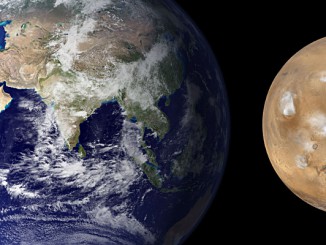
Scientists predict that rocky planets formed from ‘pebbles’
Using a new process in planetary formation modelling, where planets grow from tiny bodies called “pebbles,” Southwest Research Institute scientists can explain why Mars is so much smaller than Earth. This same process also explains the rapid formation of the gas giants Jupiter and Saturn, as reported earlier this year.









